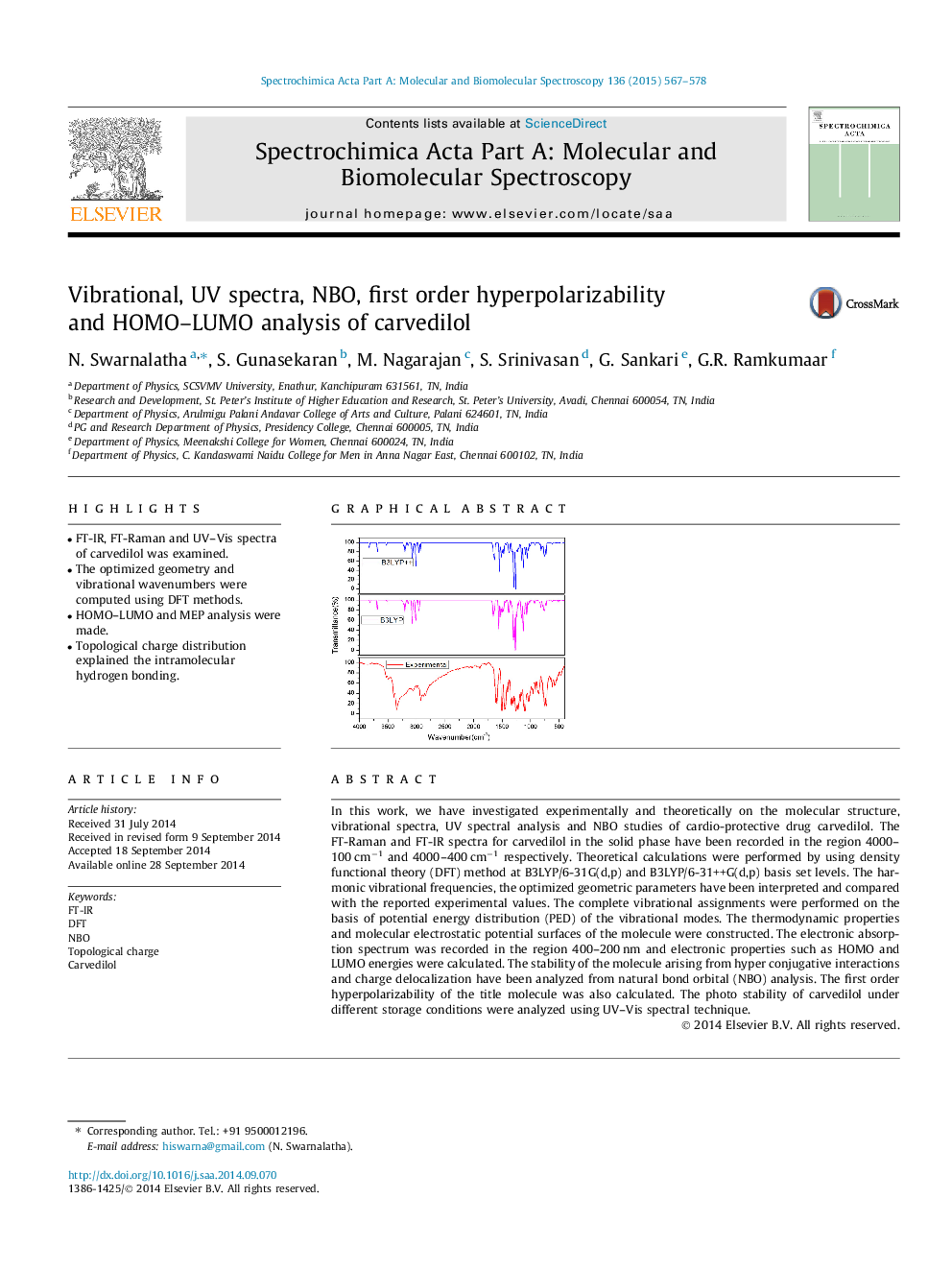| Article ID | Journal | Published Year | Pages | File Type |
|---|---|---|---|---|
| 1229470 | Spectrochimica Acta Part A: Molecular and Biomolecular Spectroscopy | 2015 | 12 Pages |
•FT-IR, FT-Raman and UV–Vis spectra of carvedilol was examined.•The optimized geometry and vibrational wavenumbers were computed using DFT methods.•HOMO–LUMO and MEP analysis were made.•Topological charge distribution explained the intramolecular hydrogen bonding.
In this work, we have investigated experimentally and theoretically on the molecular structure, vibrational spectra, UV spectral analysis and NBO studies of cardio-protective drug carvedilol. The FT-Raman and FT-IR spectra for carvedilol in the solid phase have been recorded in the region 4000–100 cm−1 and 4000–400 cm−1 respectively. Theoretical calculations were performed by using density functional theory (DFT) method at B3LYP/6-31G(d,p) and B3LYP/6-31++G(d,p) basis set levels. The harmonic vibrational frequencies, the optimized geometric parameters have been interpreted and compared with the reported experimental values. The complete vibrational assignments were performed on the basis of potential energy distribution (PED) of the vibrational modes. The thermodynamic properties and molecular electrostatic potential surfaces of the molecule were constructed. The electronic absorption spectrum was recorded in the region 400–200 nm and electronic properties such as HOMO and LUMO energies were calculated. The stability of the molecule arising from hyper conjugative interactions and charge delocalization have been analyzed from natural bond orbital (NBO) analysis. The first order hyperpolarizability of the title molecule was also calculated. The photo stability of carvedilol under different storage conditions were analyzed using UV–Vis spectral technique.
Graphical abstractFigure optionsDownload full-size imageDownload as PowerPoint slide
